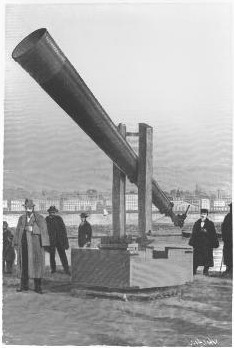
Ever since ‘weather shooting,’ as it is called in Germany and Switzerland, met with such pronounced success in Styria, upper ltaly, Hungary, and France, meteorologists have been engaged in a very wordy battle as to the merits of the scheme. That something has been accomplished cannot be denied. Indeed, so successful have been the efforts in preventing hailstorms in upper Italy that since the experiments of 1898 some twenty thousand stations have been established. At the Agricultural Congress held in Padua last November by far the greater number of the members were in favor of the building of ‘weathershooting’ stations. The congress was very decidedly impressed by an account of one of last summer’s hailstorms in the vicinity of Vicenza. So violent was this particular storm, the story runs, that for miles the land was completely devastated. But in this ravaged section, one spot was spared, because there it is asserted a number of stations had been located which had warded off the danger.
The shooting apparatus hitherto used has been very primitive in construction. For a cannon, a mortar with a funnel-like barrel was often used. In some places the funnel is fixed vertically in masonry. This method of mounting the cannon is not only crude, but also dangerous, for often enough serious accidents have occurred. In order to avoid these dangers as well as to improve the apparatus in general a Hungarian editor named Kanitz has devised a simple form of cannon which is essentially a breech-loading mortar some thirty feet in length. The mortar is journaled in a rotatable carriage, so that it can be raised and lowered and swung from side to side. The charge is a metallic cartridge of blasting powder. After the discharge a loud, shrill whistling is heard, lasting for about fourteen or fifteen seconds. French and Italian wine-growers insist that by means of the gun clouds are torn asunder, so that rain instead of hail falls.
The grape growers of five departments of the French Alps have formed an alliance for buying cannon and powder for next summer. The Italian government has such faith in weather-shooting that it supplies wine-growers with powder at the rate of three cents a pound.
— Scientific American, April 27, 1901
